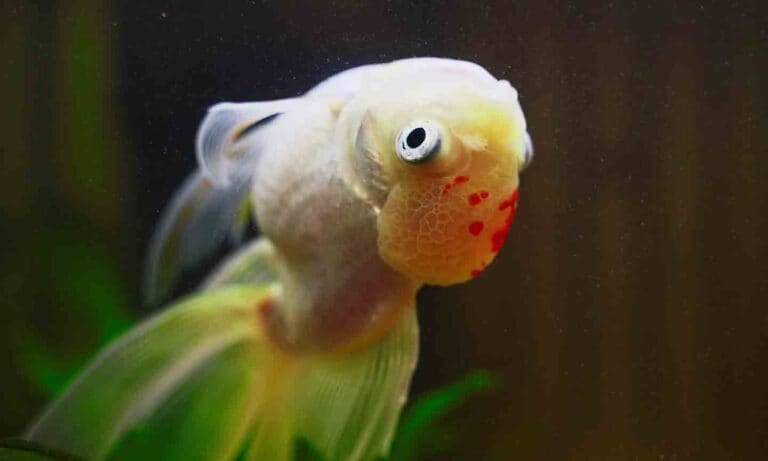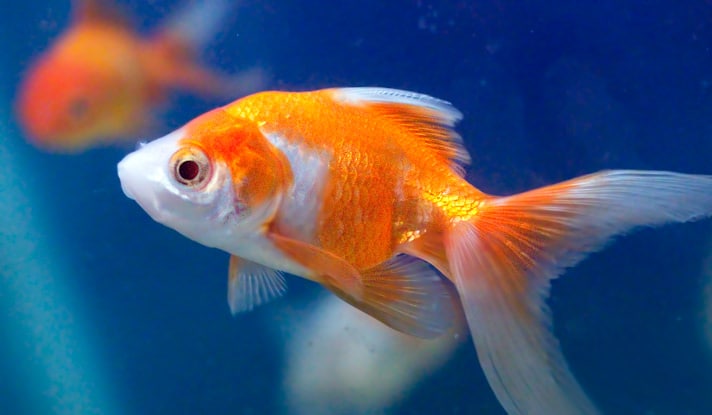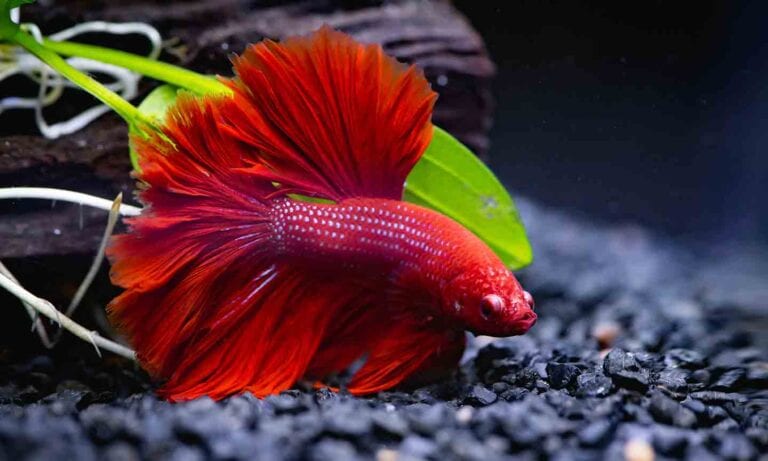As much as fish parents would like to pack their fish tank and bring their aquatic friends on vacay, it is not practical. So how do you feed your fish while you're away? Whether you opt for a fish sitter, an automatic fish feeder or vacation fish feeder or fasting, you’ll need to make informed decisions and create a smart action plan.
To help aquarists get ready for their trip, we spoke with Dr. Jessie Sanders, DVM, certified aquatic veterinarian (CertAqV) and owner of Aquatic Veterinary Services in northern California, and Dr. Benjamin Rosenbloom, DVM, veterinarian and founder of the Wet Pet Vet in New York City, for tips on how to feed aquarium fish while on vacation.
5 Options for Feeding Fish While on Vacation
Here, a detailed look at your aquarium fish care options, including costs, details about what each one entails and what to think about before finalizing your decision.
Hire an Experienced Fish Feeder/Pro Fish Sitter
One option to explore is to hire a professional pet sitter who has experience with fish, which means you can rest assured knowing you have a seasoned fish enthusiast watching over your aquatic friends. This is especially helpful if you have a saltwater fish tank, which requires the use of specialized equipment that might be overwhelming for a novice to navigate if needed.
The best thing you can do when you’re away on vacation, according to Dr. Sanders, is to have a fish sitter come check on your tank, even if you don’t plan on having them feed your fish. “That way, if there is something going on, they can at least let you know that things are looking a little funky before they get too bad,” Dr. Sanders tells Chewy.
How to Find a Professional Fish Sitter
To find a pro, ask your veterinarian or local fish supply store for a referral. Some pet sitting services also offer fish care as an available option. Here are some examples:
At the very least, you should hire a pet sitter if you’ll be gone long enough “that you’ll need a water change, or an automatic feeder would run out of food,” Dr. Rosenbloom says.
“Have them come every other day, every few days, or if they can, every day,” Dr. Sanders adds. “It’s the same thing as having your neighbor come watch your cat or dog.”
Hire a Casual Fish Sitter
Another option to explore is asking a friend, neighbor or family member to check in on your aquarium fish. This is most ideal for those with simple fish tank setups (think freshwater fish like betta fish or goldfish) and for those going on short trips. Anything longer than a week might require a water change, which might be best left to seasoned fish sitters, but could be done by a trusted friend with detailed instructions.
Also keep in mind the worst case scenario emotional cost. If there ends up being a problem with the fish tanks while you’re gone, you don’t want that to jeopardize the relationship you have with that person. Consider hiring a pro if you’re worried about that possibility.
Troubleshoot For Your Guest Fish Feeders: What to Do In Advance
For friends, family members, neighbors, or anyone planning to watch your aquarium fish with zero experience, their job as a pet sitter shouldn’t be complicated. The goal is to make things as easy as possible for them.
- Keep it simple. Don’t require the person to hatch and harvest brine shrimp, or refill your CO2 canister, for example. Stick to checking on the appearance of the tank, feeding your fish and checking water levels, if needed.
- Clearly set expectations. Communicate their fish care duties ahead of time and leave a note with specific instructions.
- Portion out the food ahead of time. Put it into bags with labels indicating the day each portion should be fed. If you have more than one aquarium, you can put sticky notes on the aquarium that indicate when and how much to feed.
- Prepare extra water. Keep in mind that water levels can become low over time due to evaporation, so it’s a good idea to have a bucket of water prepared with a water conditioner ready next to the aquarium for your fish sitter.
- Leave a phone number. Make sure you can be reached in case of questions or in the event of an emergency. You can also leave the number of an experienced fishkeeper who may be able to help if need be. If you don’t personally know any experienced fishkeepers, leave the name and number of your favorite aquarium store (and let the store’s manager know what you’re doing to facilitate communication with your fish sitter, should the need arise).
- Hide extra food. Anyone who isn’t familiar with fish might think they’re still hungry after eating their meal and feed them more than enough food. “Unfortunately, when you overfeed fish when you’re on vacation and don’t maintain the water chemistry, that’s when you’ll have a lot of problems,” Dr. Sanders says.
Invest in an Automatic Fish Feeder
Investing in an auto feeder can be especially valuable if you have fish that eat often, like active fish, warm water fish (like betta fish) or fish who are newly hatched, or if you plan to be gone longer than regular feeding times and you can’t find a pet sitter.
There are many different brands of battery-powered or electric auto feeders to choose from that are all designed to hold and dispense dry food items, such as flakes, pellets or freeze-dried foods.
There are generally two types of automatic fish feeders you can choose from. “There are some that just kind of spew a certain amount of flakes or pellets for a certain amount of time,” says Dr. Sanders. “But I really like the ones where you can portion out the meals in advance where it will drop the right amount of pellets every 12 or 24 hours, however you want to have it set up.” These are generally around the same price point.
As with any type of equipment, though, there are pros and cons. On the positive side, for a relatively modest investment, your aquarium fish will be fed automatically. But if, for any reason, the fish stop eating or the filter stops working, fish food will continue to be dispensed until you return, which can actually result in polluted water or sick fish.
If you decide to use an automatic feeder, “try to set it to the minimum amount of food you think your fish needs to get by,” Dr. Rosenbloom says. “Unless your fish has underlying health problems, it’s very unlikely it will starve while you’re gone.”
Use a Vacation Fish Feeder
An alternative to an automatic feeder is a vacation fish feeder (aka feeder blocks). These are commercially packaged slow-release feeding blocks that come in a variety of shapes and sizes with varying contents, and are designed to last for specific periods of time.
However, there are some disadvantages to using this type of feeder while you’re away. According to Dr. Sanders, they tend to be low in nutrition and can severely foul your water. Plus, since fish aren’t used to eating from a feeder block in their tank, there’s a chance they might ignore the vacation feeder altogether.
Skip The Fish Food Altogether
It’s possible, in some cases, to let your aquarium fish skip meals while you’re on vacation without consequence.
“Being cold-blooded, fish do not normally need to eat with the same frequency mammals and birds do,” Dr. Rosenbloom says.
Most adult fish can be fine without eating for a full week, or two weeks at most, according to Dr. Rosenbloom. Actually, overfeeding your fish is more of a concern than underfeeding your fish while you’re away, since the accumulation of waste from the increased intake of food can affect the water quality and jeopardize the health of your fish.
The age, water temperature and species of fish are the most important factors to consider when evaluating the length of time they can be left alone without any preparation.
- Fish age: Newly hatched fish may need to be fed 3-8 times per day with a high protein diet, according to Dr. Rosenbloom. While older, less active fish may benefit from feedings to 2-7 times per week.
- Water temperature: “Fish metabolism is directly linked to the temperature of their environment, where warmer water usually means more food required,” Dr. Rosenbloom says.
- Activity levels: Some species of fish are naturally more active than others, and a less active fish needs less food. “Fish without stomachs that graze for food, such as goldfish and suckermouth catfish, would likely need more regular feedings than an ambush predator, like a sedentary cod, that might only get to eat once in a great while in nature,” Dr. Rosenbloom says.
If your fish are especially active, are newly hatched or live in warmer water, they’ll need to eat more frequently, which means an auto feeder would be a worthwhile investment—even if you plan to be gone for a week or less.
How long (really) can I leave my aquarium fish alone?
Most pet fish in a tank need partial water changes every week or two to remove their waste products from the water they breathe and maintain optimal water quality. So if you can’t find someone you trust to do that job for you, try limiting your vacation time to under two weeks. “If water changes aren’t conducted over a period of several weeks, these waste products can build up to harmful levels,” he said.
Keep in mind that full fish tank cleanings should be done on a monthly basis, which are more involved than partial water changes and might be too overwhelming for someone inexperienced or unfamiliar with your tank.
Preparing Your Fish Tank Before You Leave
Whichever option you choose, consider taking these steps before your trip.
Prepare Your Aquarium Water
One of the best things you can do to prepare your aquarium for your time away is to perform a partial water change and clean the filtration system. “That way, your fish have the cleanest water you can give them before you leave,” Dr. Sanders says.
Feed Your Fish As You Normally Do
Dr. Rosenbloom recommends feeding your fish normally before leaving and avoiding overfeeding. “If a fish eats more, it produces more waste, which will pollute the environment when you’re gone and can’t do water changes,” he says.
Get a Light Timer
Before leaving, it’s also a good idea to invest in a timer for your aquarium lights. “A day and night cycle is important for fish to be healthy and happy, just like it is for us,” Dr. Rosenbloom says.
Purchase a Backup Heater
If you use a heater, purchasing an additional backup heater set to the same temperature as the first will ensure your aquarium fish stay warm in case one stops working.
With a little planning and preparation, the experience of taking a vacation doesn’t need to be a source of stress for fish parents. Keeping the tank maintained, coming up with a feeding plan, and hiring someone to check on your aquarium will go a long way toward ensuring you return home to healthy fish.
And be sure to check out our list of three recommended automatic fish feeders before your next trip.
Learn more about fish food:
Share:

















